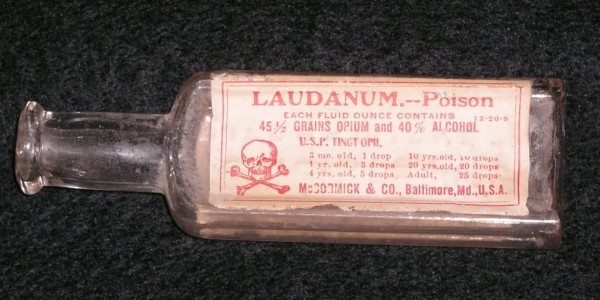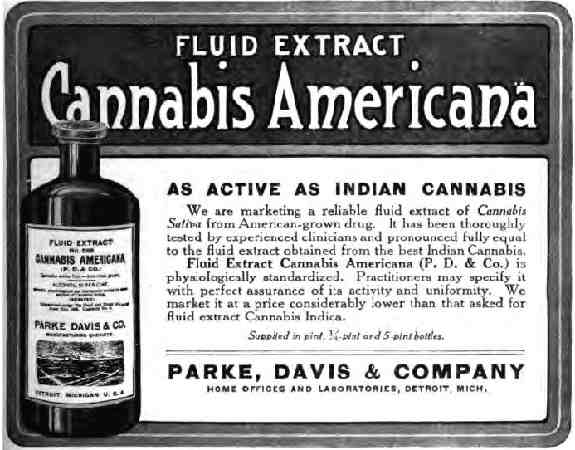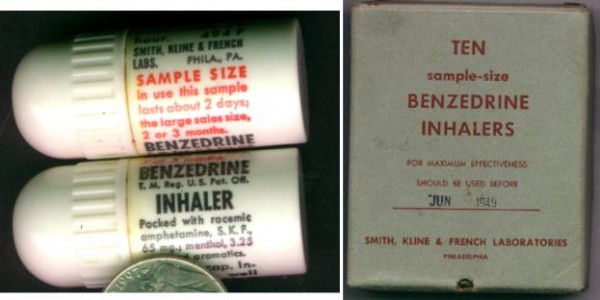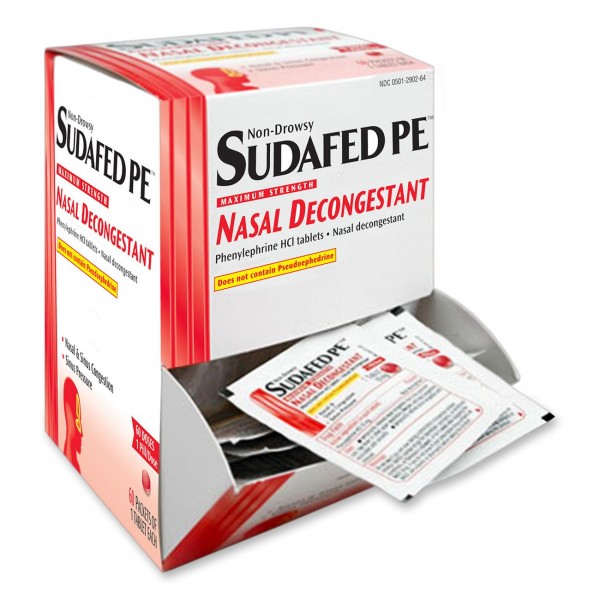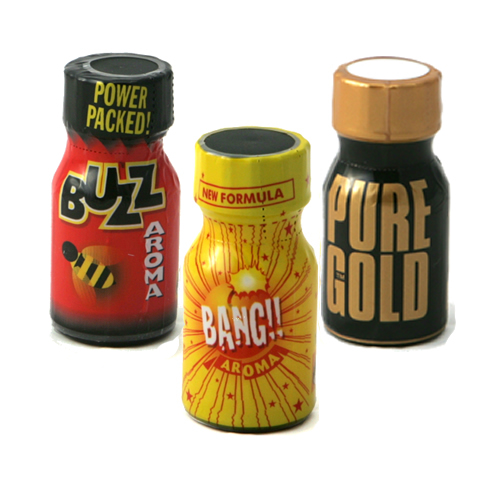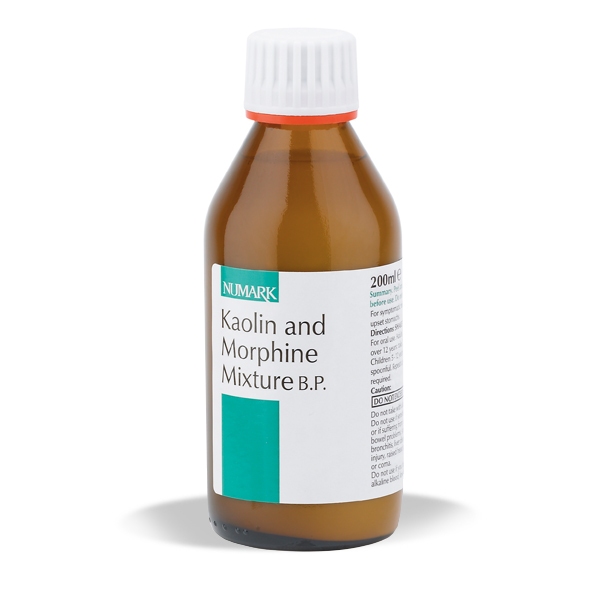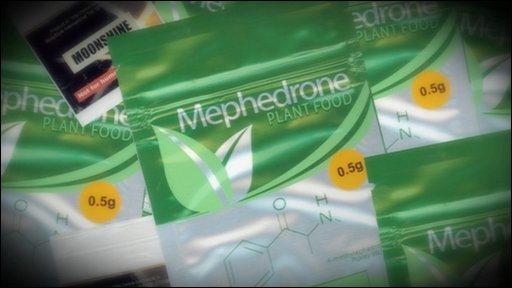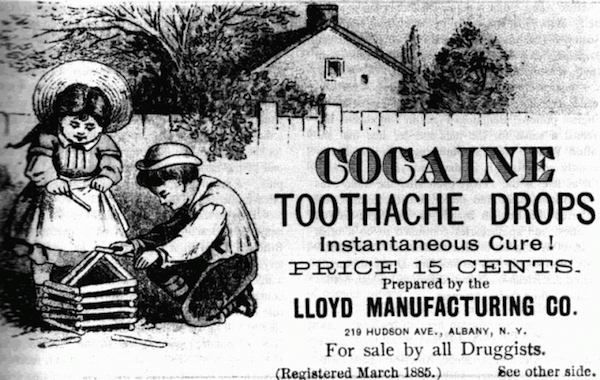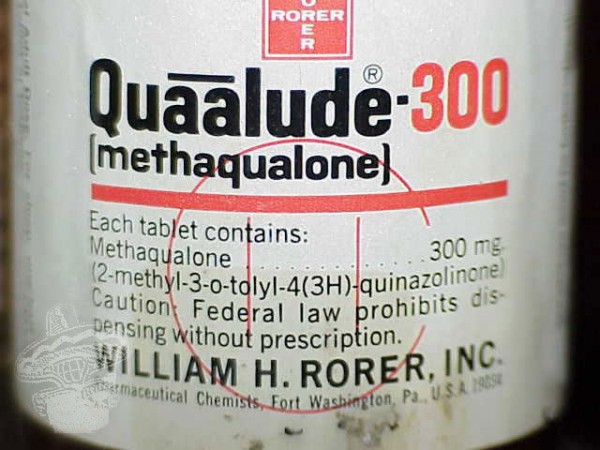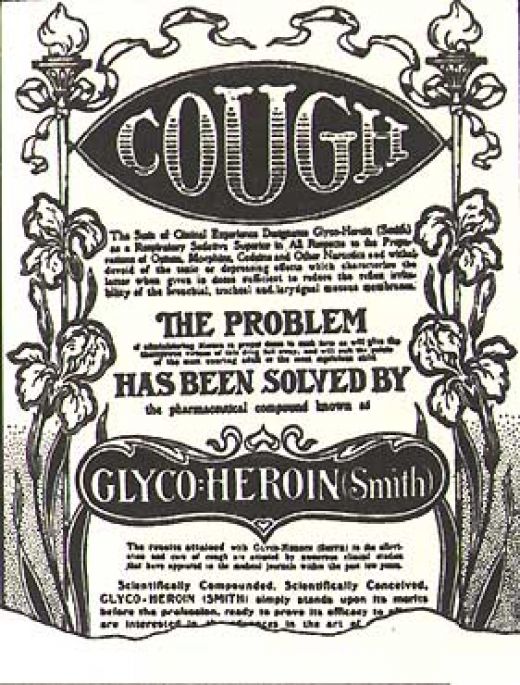Health/Medical
See other Health/Medical Articles
Title: 10 Illegal Drugs That Used To Be Sold Over The Counter
Source:
Business Pundit
URL Source: http://www.businesspundit.com/10-il ... d-to-be-sold-over-the-counter/
Published: Nov 27, 2011
Author: Julian
Post Date: 2015-10-28 07:14:38 by Deckard
Keywords: None
Views: 9263
Comments: 22
The idea of drugs being “good” or “bad” depending on whether they are legal or not is a relatively new concept. Most of the laws criminalizing psychoactive drugs only came into effect in the 20th century, and before they were outlawed, a fair number were freely available. As scientific and chemical analysis became more sophisticated, and the effects of drugs were more widely studied, lawmakers deemed it necessary to limit the availability of certain drugs, while taking little or no action against other popular — but often just as damaging — drugs from which corporations were making a killing (*cough* nicotine, alcohol). Here, then, are 10 drugs that can get people high (some more dangerous than others) which used to be sold over the counter. Just don’t complain to your local pharmacist. Opium, the milky fluid extracted from the opium poppy, has been used since ancient times as a powerful narcotic. Islamic societies, for instance, knew of its effectiveness as a painkiller (and doubtless the blissful high it could induce) long before its re-introduction to Western societies around the 16th century. Its popular medicinal use continued well into the 19th century, and it was freely available over the counter. It was sold, for example, dissolved in alcohol in the tincture known as laudanum, which was a favorite among the poor. Famously, the British even fought wars with China over the opium trade, such was the value that was seen in the drug. In the years before Britain’s 1868 Pharmacy Act limited its availability, opium was freely accessible to anyone who wished to buy or sell it. The fact that a significant proportion of the population was dependent on the drug went largely ignored. Cannabis (a.k.a. marijuana in widely adopted slang) — or to give it its older name, hemp — has been used by humanity for its euphoric effects since the dawn of time. In America, for example, it was used enthusiastically for such properties — as well as for its excellent qualities as a strong rope-making fiber — by new European settlers, who found that the plant could grow in abundance in the new soil on which they had landed. In 1619, legislation was passed by the Virginia Assembly stipulating that all farmers were obligated to grow hemp. Early American presidents George Washington and Thomas Jefferson even grew the weed in their own backyards. The first laws concerning cannabis distribution were not passed until 1906, and sentences for possession of the drug were not handed out before the 1940s — after it had become enmeshed in the public consciousness with fears about Mexican immigration. Before then, the drug was widely available from catalogues and pharmacies: at the turn of the 20th century $2.40 would have bought you an ounce of resin. Benzedrine, in the form of inhalers and later tablets, was readily available over the counter until the 1950s. Marketed under this brand name by Smith, Kline & French (the company that was to become part of GlaxoSmithKline), the drug was initially used as a bronchodilator. However, people who needed help to breathe soon discovered that the innocuous inhaler had a potent stimulant effect. By 1949, many stories had been reported of the drug being used for recreational purposes, as well as as an appetite suppressant. A decade later, “bennies” (as they came to be known) were reclassified as a controlled substance. Benzedrine was then replaced by non-prescription inhalers containing propylhexedrine, which was sold as Benzedrex. Methamphetamine — or to give it its street names, crystal meth, ice or glass — is a particularly strong form of amphetamine. It can create intense feelings of alertness, euphoria and self-esteem when taken in large enough doses. It is also highly addictive, can quickly lead to anxiety and paranoia, and is associated with a range of serious public health issues. Methamphetamine can be produced in home laboratories using pseudoephedrine or ephedrine, which interestingly used to be active ingredients in over-the-counter medicines like Sudafed. Over the last two decades, more and more restrictions have been placed on products that contain the aforementioned chemicals (Sudafed no longer contains the ingredient, for example) and today buyers need identification to purchase them. Amyl nitrate, popularly known as “poppers” (because of the popping sound originally made by crushing the glass receptacle that held the liquid), used to be available for legal purchase in the United States. From 1960 to 1969 it could be obtained without a prescription. By the end of the 1980s, after a rise in casual use was observed, it was deemed too dangerous and was banned. That said, until very recently it was still widely available in continental European countries such as France, where the dizziness and “rush” associated with it were sought after. In the UK, poppers can still be bought in stores, usually in drug paraphernalia “head shops.” Online suppliers having circumvented the 1968 ban on their sale for human consumption by marketing them as room deodorizers. The pain-relieving drug codeine is a derivative of opium that was first isolated in 1832 by French chemist Pierre Robiquet. While codeine can be obtained directly from the opium poppy, it is more commonly extracted and synthesized from morphine. Apparently favorites of late Nirvana frontman Kurt Cobain, cough syrups and cold remedies containing codeine were commonly available without prescription until relatively recently in the United States. Medicines containing the ingredient can still be found in pharmacies around the world. Mephedrone, also known as meph, drone and MCAT, made headlines in Britain in 2010 when there were widespread reports of a craze for the drug sweeping the nation. Producing a similar effect to MDMA (ecstasy), amphetamines (speed) and cocaine, the drug is believed to have been be manufactured in China and is chemically similar to the East African plant khat, which is also taken for the high it induces. The drug was first synthesized in 1929. It was however not widely known about until 2003, when it became easily obtainable over the counter and extremely popular in the UK and other European nations — where it was sold as “plant food” to bypass laws against its sale for human consumption. Nevertheless, in 2010 the EU ruled it illegal and America has followed suit as of October 2011. The coca leaf has been used by people indigenous to South America for thousands of years, although the isolation of cocaine itself, by the German chemist Friedrich Gaedcke, was not achieved until 1855. It will probably come as no surprise by now that the drug widely known as coke used to be freely available to buy over the counter in Europe and the United States. Anesthetic toothache powders and congestion relief medicines all contained cocaine at one time. These products (as well as Coca-Cola, which really did use cocaine as an ingredient when it was first produced, and later coca leaves until 1906) could be easily procured at the local pharmacy. Drug companies like Parke-Davis (a subsidiary of Pfizer) and Merck sold it in forms ranging from cigarettes to powders to a mixture for injecting! It was only later — in 1914 in the US — that the sale and distribution of cocaine was outlawed, its dangers having been entwined with American social and racial moral panics. Today, substances such as lidocaine replicate cocaine’s numbing effects without the general euphoria that comes with it. The drug commonly known in America as Quaaludes, “ludes,” Mandrax or Sopors was produced using the sedative-hypnotic drug methaqualone. Originally synthesized in India in 1951, it soon made its way to Europe and Japan as an allegedly safe alternative to barbiturates. Having been available over the counter in Germany in the early ’60s, it appeared in America as the sedative known as Quaaludes in 1965, and by 1972 widespread abuse of the drug had become a problem. Ludes were extensively in use among ’70s college students, who took them in order to experience a dreamy high. However, the risk of overdosing was high, particularly if they were washed down with alcohol. By 1973, it was illegal to be in possession of the drug without a prescription in the US, but that didn’t stop unscrupulous doctors from prescribing it. Still, by 1984, methaqualone had been reclassified as a Schedule I drug, effectively outlawing it. Amazingly, heroin — the notoriously addictive illegal drug today used by 50 million people on a regular basis — was once far more readily available than it is now. Yes, heroin could be acquired over the counter with consummate ease in the late 19th and early 20th centuries in UK and the USA. Synthesized by German chemist Felix Hoffmann, it was commercially produced by Bayer Pharmaceutical from 1898 onwards for medicinal purposes — including as a cough syrup for children and as a “non-addictive morphine substitute.” Surprisingly, its importation and manufacture was not banned in the United States until as late as 1924. It was only with the passing of the Harrison Narcotics Tax Act in 1914 that heroin’s sale and distribution was controlled in the US. It was widely available without a prescription in the UK until 1926. Alarmingly, Bayer sold the substance as a cure for morphine addiction only for it to be discovered that the body quickly processes it into morphine, actually making it a faster-acting and doubly potent alternative. 10. Opium
9. Cannabis
8. Benzedrine (Amphetamine)
7. Methamphetamine (Sudafed)
6. Amyl Nitrate (Poppers)
5. Codeine
4. Mephedrone
3. Cocaine
2. Quaaludes
1. Heroin
Post Comment Private Reply Ignore Thread
Top • Page Up • Full Thread • Page Down • Bottom/Latest
Begin Trace Mode for Comment # 7.
#7. To: Deckard (#0)
At one time arsenic was popular among women because it gave them a light complesion. Over a period of years people have used a variety of drugs not realizing what the long term effects were. Islamic warriors were given hashish before battle because it rendered them fierce and insensitive to pain or caution. They were called Hashishians. Foreign armies mispronounced the term and it became translated into the word assassin.
#8. To: rlk (#7)
You see myths as true and truth as a myth. You're a smart dude but blind in many ways.
Just like they used lead in all manner of things and slowly poisoned themselves over a period of time, mainly the Romans...
Top • Page Up • Full Thread • Page Down • Bottom/Latest
Replies to Comment # 7. Islamic warriors were given hashish before battle because it rendered them fierce and insensitive to pain or caution. They were called Hashishians. Foreign armies mispronounced the term and it became translated into the word assassin.
#13. To: rlk (#7)
Over a period of years people have used a variety of drugs not realizing what the long term effects were.
End Trace Mode for Comment # 7.
[Home] [Headlines] [Latest Articles] [Latest Comments] [Post] [Mail] [Sign-in] [Setup] [Help] [Register]

